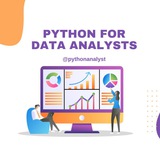tg-me.com/pythonanalyst/965
Last Update:
Data Analyst Interview Questions
[Python, SQL, PowerBI]
1. Is indentation required in python?
Ans: Indentation is necessary for Python. It specifies a block of code. All code within loops, classes, functions, etc is specified within an indented block. It is usually done using four space characters. If your code is not indented necessarily, it will not execute accurately and will throw errors as well.
2. What are Entities and Relationships?
Ans:
Entity: An entity can be a real-world object that can be easily identifiable. For example, in a college database, students, professors, workers, departments, and projects can be referred to as entities.
Relationships: Relations or links between entities that have something to do with each other. For example – The employee’s table in a company’s database can be associated with the salary table in the same database.
3. What are Aggregate and Scalar functions?
Ans: An aggregate function performs operations on a collection of values to return a single scalar value. Aggregate functions are often used with the GROUP BY and HAVING clauses of the SELECT statement. A scalar function returns a single value based on the input value.
4. What are Custom Visuals in Power BI?
Ans: Custom Visuals are like any other visualizations, generated using Power BI. The only difference is that it develops the custom visuals using a custom SDK. The languages like JQuery and JavaScript are used to create custom visuals in Power BI
ENJOY LEARNING 👍👍
BY Python for Data Analysts
Warning: Undefined variable $i in /var/www/tg-me/post.php on line 283
Share with your friend now:
tg-me.com/pythonanalyst/965
